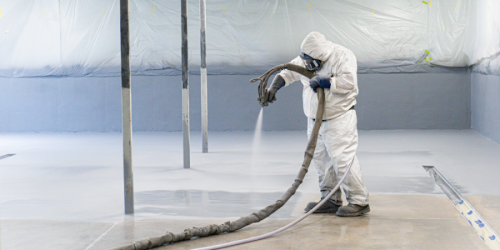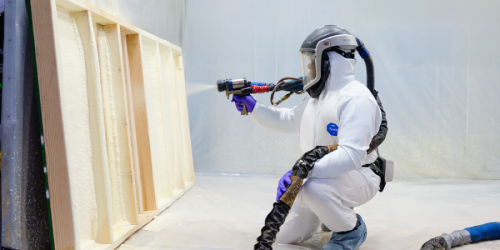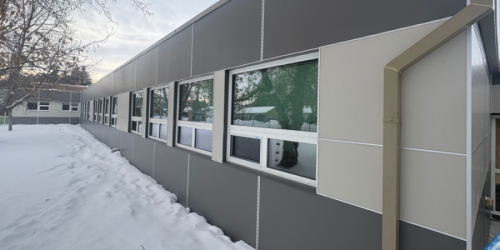Q&A Forums
stucco rep Post New Topic | Post Reply
| Author | Comments |
|---|---|
|
Terry Adams
Posted: Jul 08, 2008 10:27 PM
|
stucco rep
Mason, had a customer tell me that the Dryvit stucco rep told him not to use sprayfoam in his home because all siding products including his will eventualy leak and the water would not have anywhere to go. This would cause wood rot around windows, doors etc. I'm asking to get any opinions/facts good or bad to give to the homeowner. I'm not buying into it myself.
|
|
philip mullins
Posted: Jul 09, 2008 02:37 AM
|
hey terry, was just logging on to see if ur prospect posted his question here as you suggested. and see what some of the replies were. i'm not buying it either. i have to believe that a vapor barrier works to solve moisture problems, not create them. wouldnt the condition described exist with all vapor barriers, foam or other? but, then again... what do i know? i admit that i aint that smart. just kinda getting by on charm and dashing good looks! |
|
mason
Posted: Jul 09, 2008 07:23 AM
|
Dryvit is a exterior insulation finish system. A sheathing of XPS or EPS is installed as exterior siding over studs, then the foam sheathing is covered with a polyester scrim cloth and a acrylic based finish. This provides a barrier to water intrusion. But,the weak points of the system are around doors and windows where many times the caulking fails, allowing water in and rotting out the wood framing members. The solution is to provide a drainage space between the exterior sheathing and the interior sheathing. It makes it more expensive but works. Sprayfoam installed to the inside of the interior sheathing would prevent water intrustion into the house (a good thing), but would not allow water to drain that is trapped next to the wood framing members around doors and windows. So, the answer is the same, have an exterior sheathing (the Dryvit system) and interior sheathing that you spray your foam to. I had a Dryvit house and experienced rotted wood around the doors and windows. We could not add a drainage plane so instead we hired a contractor to fix the initial water damage and then to recaulk around the doors and windows using backer rod and then a urethane sealant. The backer rod reduces the pontential for movement and failure of the caulking. Then we paid a fee to the contractor for annual inspections and repair So the answer is that SPF can be used succesfully with EIFS systems so long as they are installed and maintained correctly. |
|
Terry Adams
Posted: Jul 09, 2008 11:48 AM
|
On this house the exterior walls have osb then tyvex then durock cement board. So where would the water drain if fiberglass is used, into the walls where it would grow mold that could be pulled thru the electrical and plumbing penetrations when the hvac runs? Sounds like the stucco guy is condemning his product not sprayfoam. This house is on the gulf, elevated, and very well built. If he uses spf with stucco what would be better CC or OC? Thanks for info and if anybody knows a stucco product that does not have those problems chime in. Thanks |
|
Rob Granger
Posted: Jul 09, 2008 10:05 PM
|
Terry, I think the durock cement board is overkill! Instead suggest the dryvit installer uses Vicor Plus window flashing around his windows, doors and uses a product such as "Home Slicker" underneath the dryvit which provides for a drainage plane should water get in behind the dryvit. Check out the Rain Control Product section of EFI at efi.org They also have great Quickflash weatherproofing panels for HVAC, electrical, and other penetrations through the outside wall Rob YES FOAM |
|
Gerry Wagoner
Posted: Jul 10, 2008 09:17 AM
|
Such arguments (from the Dryvit rep) are asking a philosophical impossiblity, namely that you prove a negative. og |
|
Terry Adams
Posted: Jul 10, 2008 01:03 PM
|
Thanks guys. I'll pass this on to the customer. |
|
mason
Posted: Jul 12, 2008 09:33 AM
|
I think you have the picture. The closed cell sprayfoam would act as a secondary barrier to water intrustion, while the fiberglass would allow any water thats into the wall to settle along the floor of the wall cavity. Open cell would allow some water to intrude into the cavity, but not as much as using fiberglass. But, to be safe, find out if the Dryvit system has an exclusion about using sprayfoam. |
|
SprayFoamSupply.com
Posted: Jul 12, 2008 11:17 PM
|
Why not spray the foam to the durarock on the outside of the building, plain it smooth, then apply the stucco to the foam? Mike Belleau of Masterbond SPF has this system patented. He can be reached @ 978.835.2369 or Newfoundwall6@aol.com George |





























